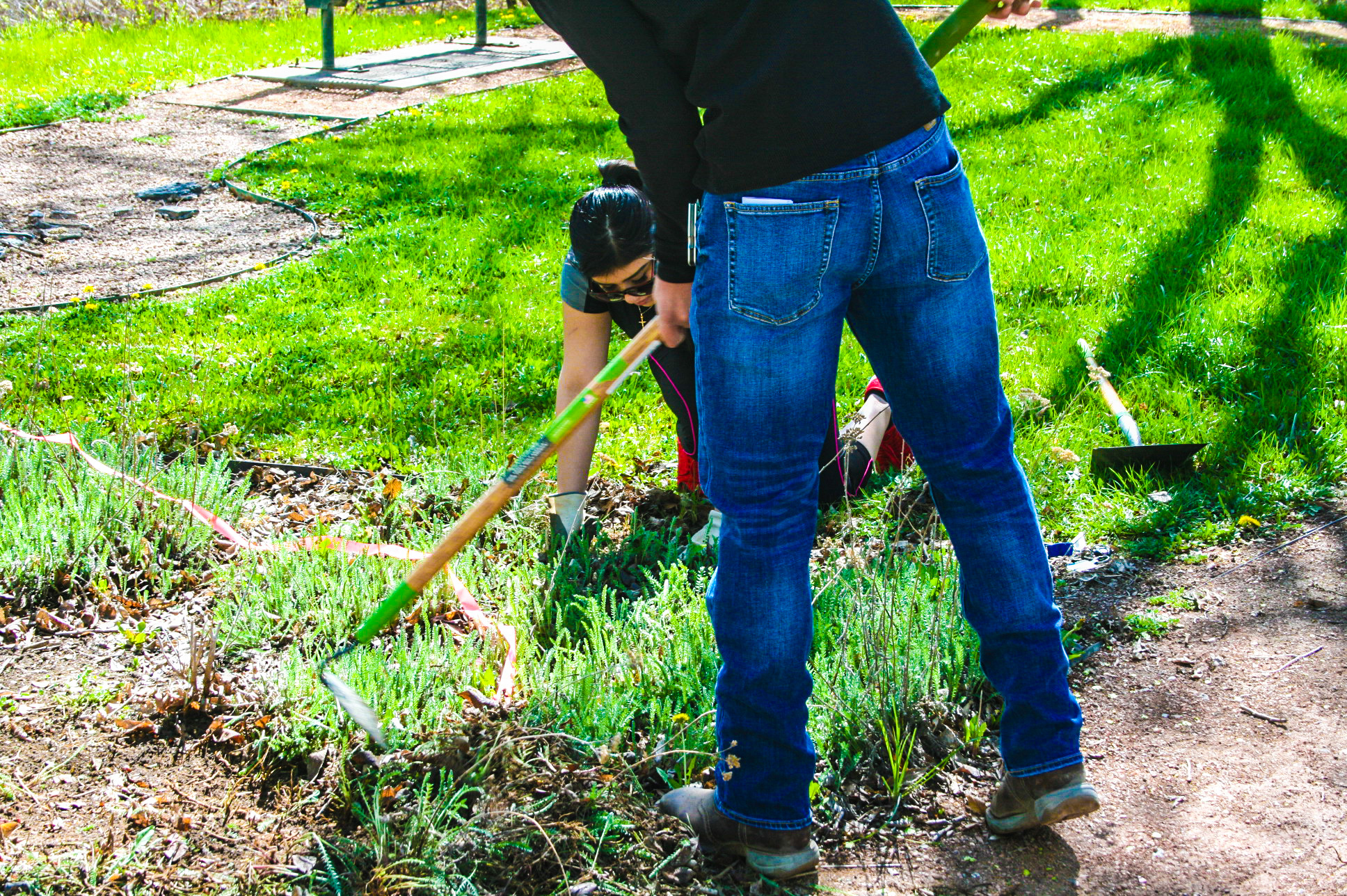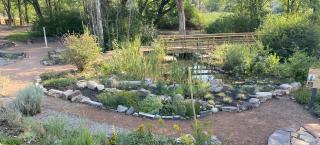
Story
An Ethnobotany Garden Grows in Montrose
The Ute Indian Museum's Ethnobotany Garden is a haven for plants native to the Western Slope and used by Colorado's oldest residents.
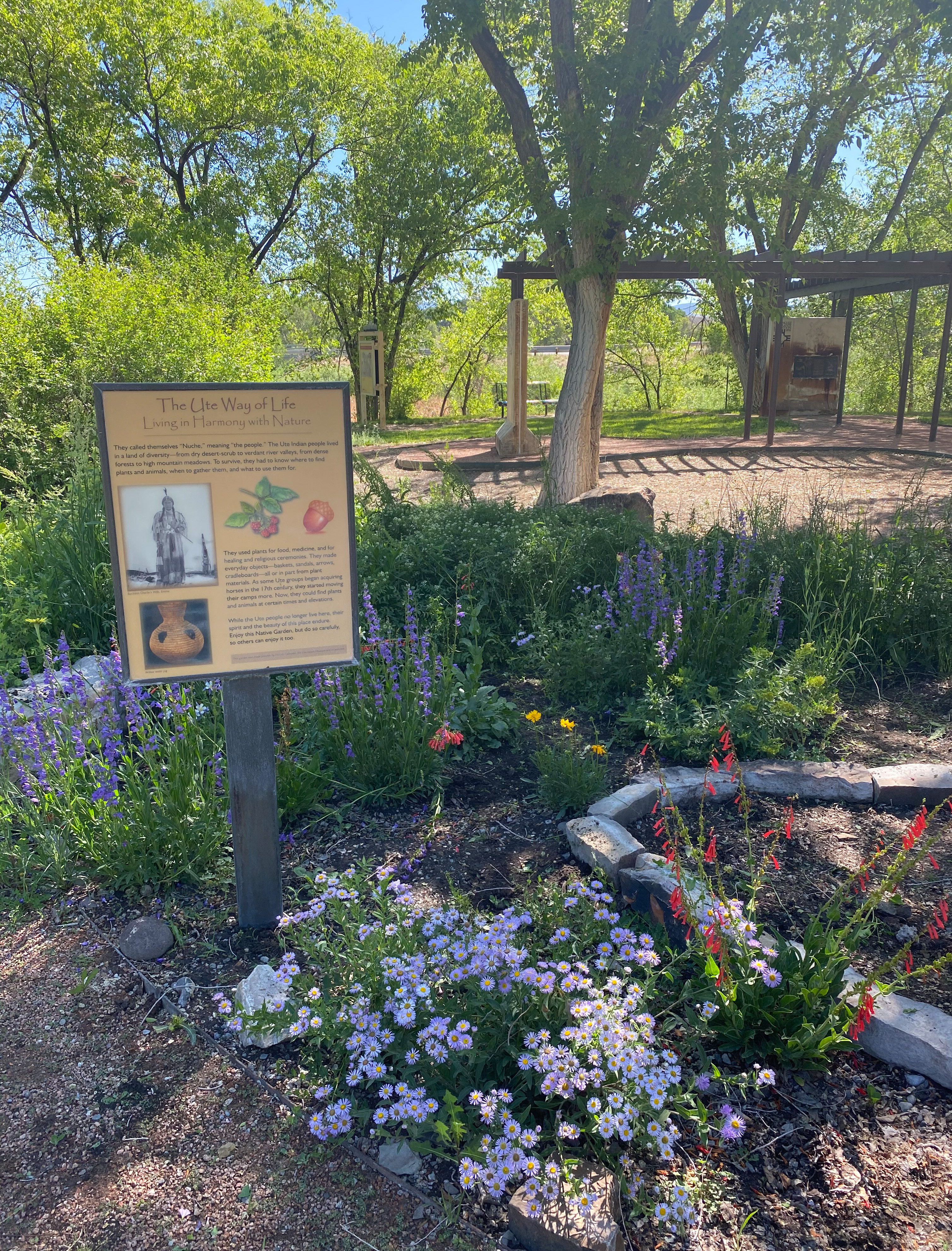
The Ethnobotany Garden blooms profusely in the late spring and early summer. The Utes were sophisticated naturalists who followed game and blooming plants from lower elevations to higher elevations to take advantage of each season’s bounty.
“Mary, Mary, quite contrary, how does your garden grow?” As a lifelong gardener and Colorado Native Plant Master®, I’ve been asked this question innumerable times during my life. And, as a volunteer at the Ute Indian Museum in Montrose, my answer to this question is now very specific.
In 2017 a small group of volunteers at the museum dreamed of transforming an existing quarter-acre garden space into an ethnobotany garden. I was part of that group of volunteers. The timing couldn’t have been more perfect as ethnobotany is enjoying a surge in public interest. Simply defined, ethnobotany is the science of how people use native plants.
“I wanted a place where we could show, not just talk about, native plants specifically used by the Ute People,” said fellow volunteer and docent Barbara Hodge. Hodge and others were adamant that the existing garden be completely restored to include native plants that were traditionally used by the Utes for cultural, medicinal, and practical or ceremonial purposes.
The museum is situated on acreage that was once part of Chief Ouray’s homestead. Its grounds include the crypt of Ouray’s wife Chipeta and a monument to Chief Ouray. Tipis and seating areas abound for visitors to take in the views while reflecting on the exhibits and artifacts seen in the museum. They likely sit and ponder the lives of the Utes who traveled to this region annually as they followed game and the blooming of native plants that were critical to their needs.
The existing garden space was an ornamental garden established in the 1990s and it’s likely that native plants were not available in the nursery trade at that time. That explained the abundance of Chinese willow and European tuberous geranium species in the garden. It also explained the bountiful displays of Shasta daisies and dominant stands of other nonnative flowering plants like ornamental elderberry, bellflower, and yarrow cultivars. While it was kept manicured, many weedy species invaded the space as well.
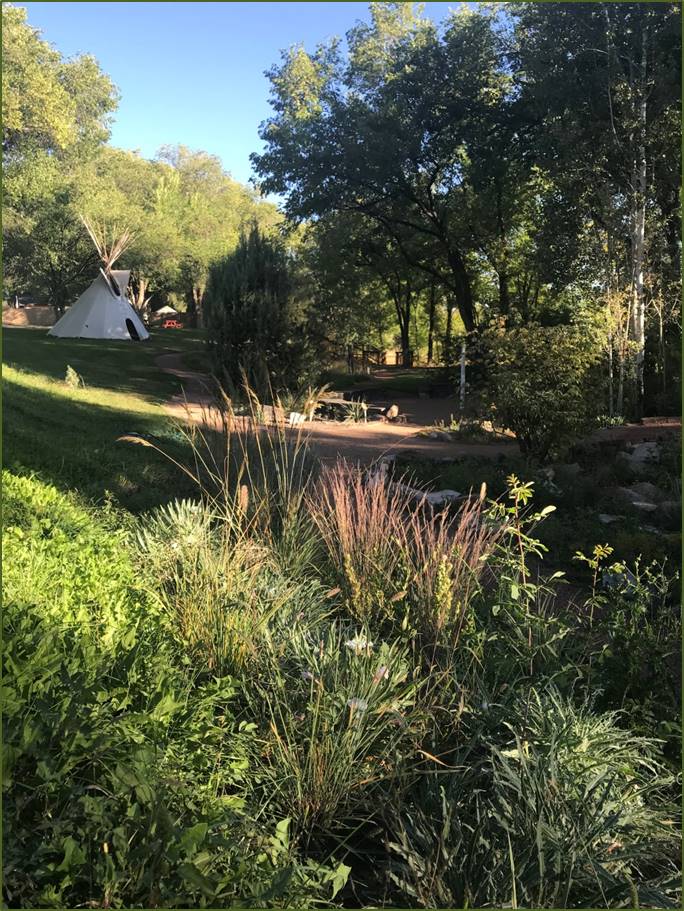
The Ethnobotany Garden features wildflowers as well as a variety of grasses, cattail, willow, and fruiting shrubs—all native to the area.
Starting with Good Structure
Fortunately, when the four-person volunteer task team started its garden renovation project, there was no need to create a garden plan from scratch and no need to redesign the garden’s layout. The existing space had great bones—with gravel paths, areas of shade and sun, and other architectural interests including a seating area encircling a peace pole and big boulders. It also featured a short foot bridge spanning a space between a very small pond and its outflow leading to the Uncompahgre River just a few hundred feet away.
The pond, fed largely by a natural spring on the other side of the road and channeled into a culvert, provides visual interest and habitat variety. Unfortunately, the water is tainted with upstream agricultural runoff that has, over the years, created perfect conditions for non-native watercress (Nasturtium officinale) to establish and flourish, rendering eradication of the watercress impossible. That was just one of the challenges the task team faced in 2017.
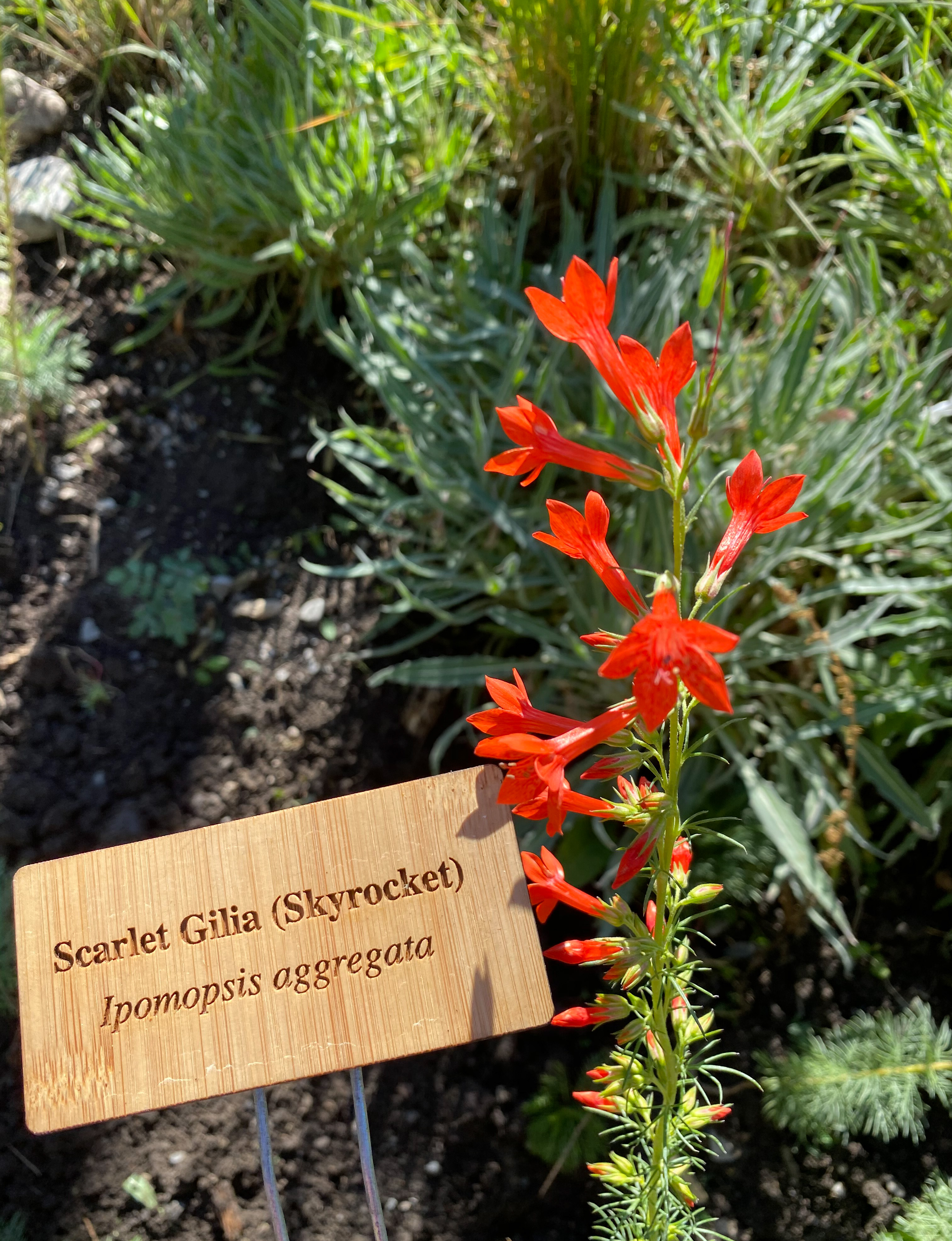
Scarlet gilia, also known as fairy trumpet or skyrocket (Ipomopsis aggregata) provides a summer-long pop of color in the Ethnobotany Garden. Parts of this plant were used to soothe rheumatic joints, to induce vomiting, or to make an adhesive. It’s also a favorite plant of hummingbirds and other pollinators.
Removing All Nonnative Plants
The plan wasn’t perfect, but working with more than 40 volunteers—including museum volunteers, local scouting organizations, and interested Montrose residents—all nonnative species were dug up and ripped out in just one day. There were some challenges, however, and some of those remain today.
- A sloped section of overgrown wild roses was removed to make way for native grasses, scarlet gilia, tufted evening primrose, and tall goldenrod. Wild roses like to regenerate underground from their hardy roots and they continue to pop up still—four years after they were originally “removed.”
- Shasta daisies also spread via their roots. They can be prolific and long-lived in areas like Montrose that have fairly mild winters. It’s an annual chore to dig up the remnants of the daisies’ two decades of growth.
- The aggressive watercress and the pond’s flow leading directly to the nearby Uncompahgre River cannot be treated with herbicides. Instead, it’s treated mechanically, meaning volunteers annually cut, pull, and dig up the water-choking weed. Future efforts may include smothering it, and, if funds ever become available, installing a lined culvert and pond liner might help.
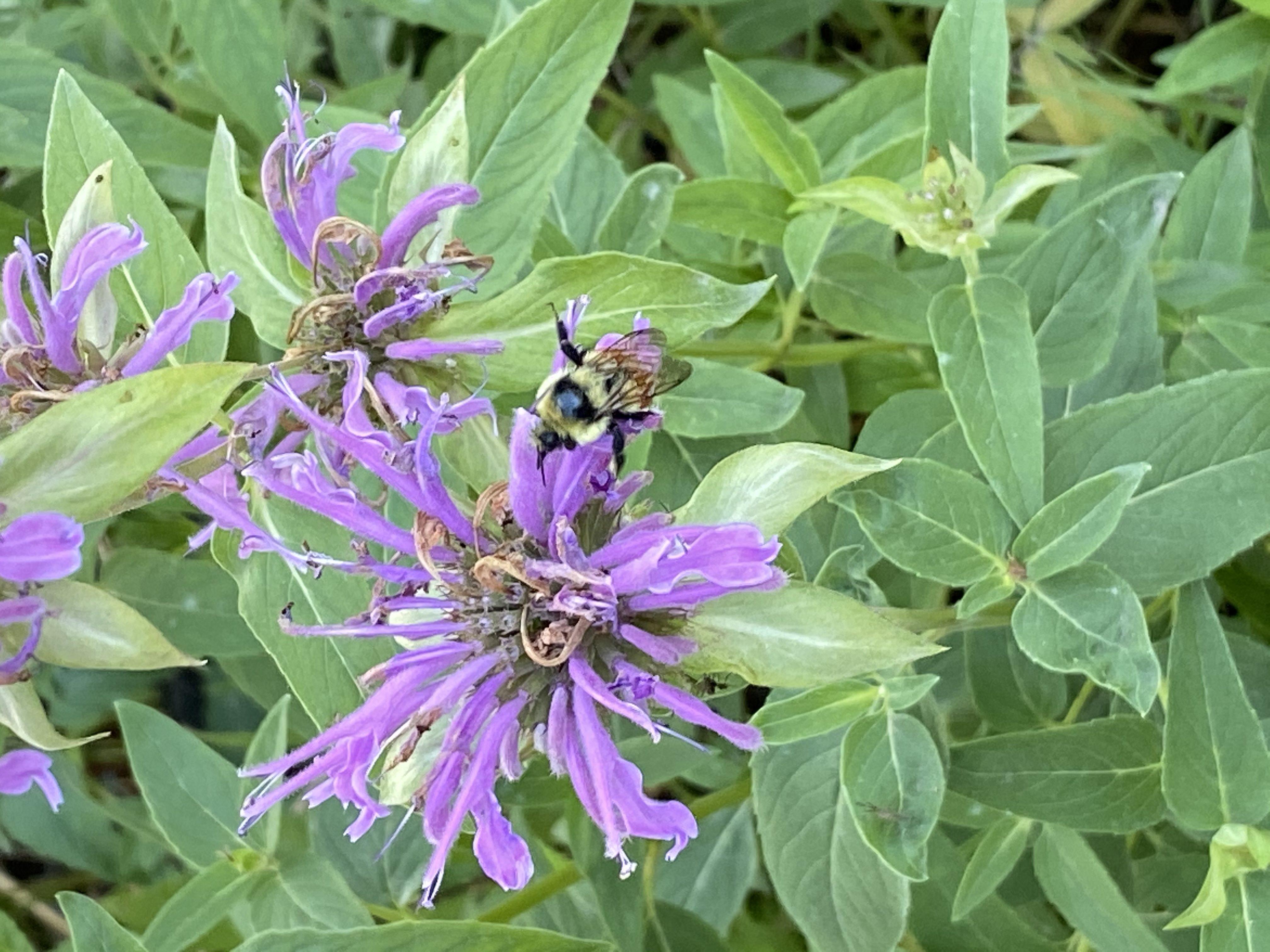
Wild Bergamot (Monarda fisulosa) is native to much of Colorado and is still gathered by Utes in the fall for private use. The native plants in the Ethnobotany Gardena also support native pollinators.
- Annual introduced weeds continue to make themselves at home in the Ethnobotany Garden. Many years of seed bank contributes to the nuisance. On the plus side, docents can explain how immigrants to the U.S. brought non-native plants like watercress, dandelion (Taraxacum officinale), chicory (Cichorium intybus), wild lettuce (Lactuca serriola), burdock (Arctium minus), and more to this land as edible and medicinal plants familiar to them in their home countries. It’s well documented that settlers shared this information with Indigenous people like the Utes and other tribes. So museum volunteers and docents have lightly embraced the nonnative plants as a teaching opportunity to educate visitors to the garden.
Docents receive training and information about all of the native plants and the handful of nonnative weeds so that they can adequately share knowledge with visitors to the Ute Ethnobotany Garden. A docent guide developed in conjunction with new interpretive signage for the garden assists volunteers in learning about the various plants found therein.
Planting for the Future
The volunteer team that initiated the garden restoration process spent many hours researching plants used by the Utes in Western Colorado. They read published papers and consulted with subject matter experts, including University of Kansas ethnobotanist Dr. Kelly Kindscher. They also studied numerous books and native plant resources and interviewed members of the Ute tribes. Finally, the group narrowed the list of plants to ensure they identified only those species native to Montrose County where the museum is located and where the Utes traveled when following the seasonal plant blooms.
Knowing that some plants might not fare well after the first year, the team resigned itself to accepting failure beyond its control. Indeed, some plants did not survive the first winter. Yet many plants have survived and flourished in the four years since planting restoration.
The team’s plan is to continue to spread seed each fall or early winter. Some local volunteers have even donated plants and shrubs to the garden. This year, the volunteers spread seed in established areas for coyote tobacco (Nicotiana attenuata) curlycup gumweed (Grindelia squarrosa), and arrowleaf balsamroot (Balsamorhiza sagittata) as it’s still difficult to find these plants for sale in the nursery trade. Time will tell if the seeding effort is successful.
Volunteers also over seeded beds of blue flax (Linum lewisii) and blanket flower (Gaillardia aristata) to increase the mass and population size of these native plants and to also add new plants that provide color and year-round interest.
Learning About the Past and Inspiring Future Generations
Other volunteer projects include developing K-12 curriculum related to the Ethnobotany Garden and public workshops to learn more about the plants in the Ethnobotany Garden.
The K-12 curriculum being developed is to provide programming for field trips to the museum, summer camp for local children, and learning opportunities for Ute youth who visit the garden. The emphasis is on science, though Ute culture and traditions will be addressed in interdisciplinary ways.
Curriculum activities include learning about native plants and how they reproduce, reinforcing the conservation ethics practiced by previous generations of Utes, collecting plants and creating herbarium samples for Ute history files, using plant materials hands-on to learn how the Utes used them, learning the Ute vocabulary for plant parts, interviewing Ute elders to glean plant knowledge from them and documenting that knowledge in literacy activities, and more.
All of these activities are being developed to inspire young scientists, perhaps even young botanists.
In the meantime, volunteer opportunities have sprouted (pun intended)! New volunteers have stepped forth to help maintain the Ute Ethnobotany Garden, give informative tours of the garden, and share knowledge of native plants and how they were used by the Utes. There are even graduate students who have recently asked to work with the Ute tribes and the Ute Indian Museum to conduct research about ethnobotany and learning gardens.
“It’s been satisfying to see how the Ute Ethnobotany Garden has grown and how the original garden has been transformed,” said CJ Brafford, director at the Ute Indian Museum. “Nothing lasts forever. The landscape is always changing. We watch it grow and evolve with an awareness and an understanding through education.”
So how does this garden grow? Not with silver bells and cockle shells, but with shared knowledge, many volunteers, and interest from the public.
The Ethnobotany Garden at the Ute Indian Museum was made possible with the generous support of the Colorado Garden Foundation, the Colorado Native Plant Society, and the Friends of the Ute Indian Museum. Additional support came from a National Science Foundation grant awarded to History Colorado for partnership in the furtherance of Ute STEM and Traditional Ecological Knowledge practices.
More from The Colorado Magazine
Letters Colorado’s Women’s Suffrage Leaders Probably Didn’t Want You to Read The campaign for the women’s vote in Colorado was one of letters. Organizers traded views and information regularly in private letters. Many of those letters are now in History Colorado’s collection, offering us a behind-the-scenes look at the campaign - even a few things they might not have wished to preserve for posterity.
Dr. Richard Corwin and Colorado’s Changing Racial Divide As many communities around Colorado reexamine how our public buildings and places are named, we take a look at one man who left his mark on Pueblo. Richard Corwin was an advocate for eugenics and an outsized personality with one of the state’s largest employers.
Hindsight 20/20 The Colorado Magazine asked twenty of today's most insightful historians and thought leaders to share their visions of how 2020 will go down in history.

